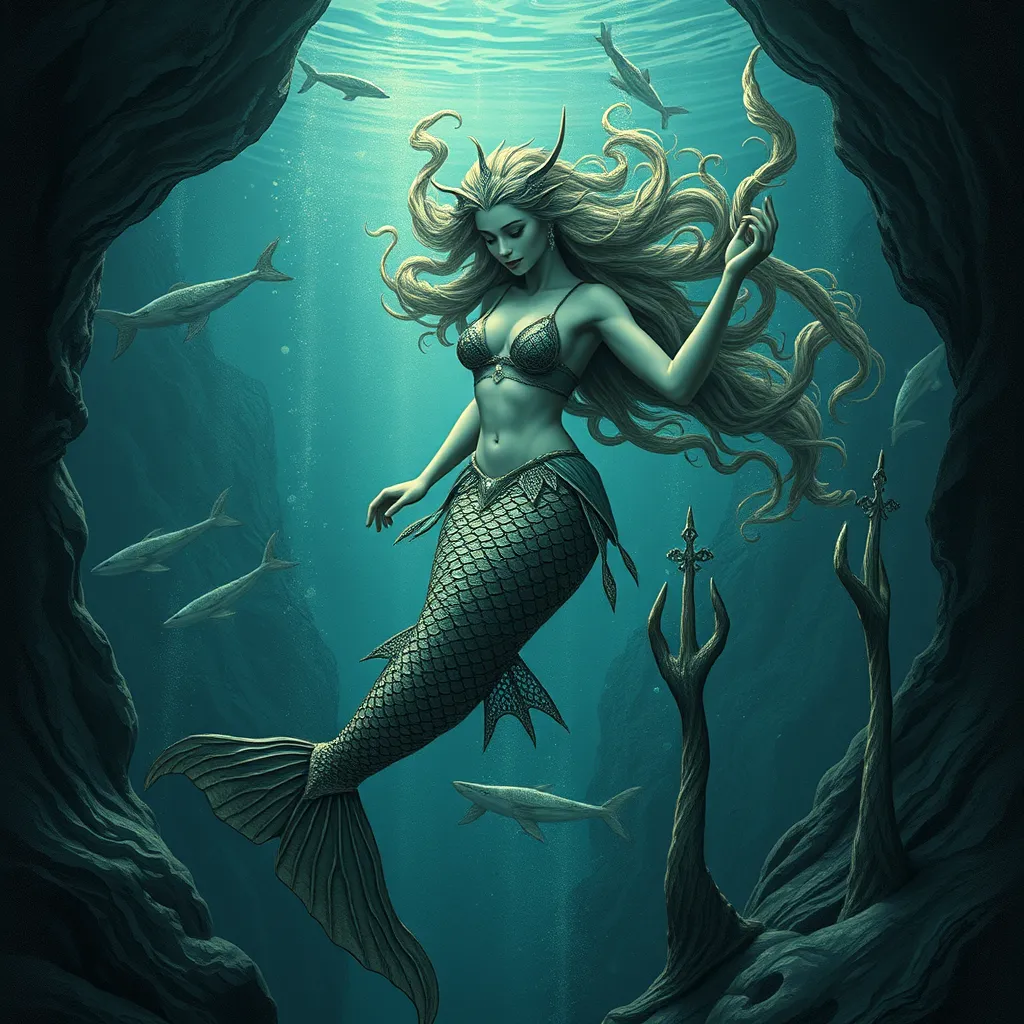The Cyclops in Mythology: A Global Perspective: Exploring the One-Eyed Giant Across Cultures
I. Introduction
The Cyclops, a mythical creature characterized by its single eye in the middle of its forehead, holds a significant place in various mythologies around the world. These one-eyed giants are often depicted as brutal and uncivilized beings, yet their narratives also encompass themes of strength, isolation, and the clash between civilization and barbarism. This article aims to explore the depiction of Cyclopes across different cultures, examining their origins, characteristics, and the impact they have had on modern storytelling.
II. The Origins of the Cyclops Myth
The myth of the Cyclops can be traced back to ancient civilizations, with its most famous account found in Greek mythology.
A. Ancient Greek roots: Homer’s “Odyssey”
In Homer’s “Odyssey,” the Cyclops Polyphemus is one of the most well-known figures. He is portrayed as a savage giant who captures Odysseus and his men, only to be outsmarted by the clever hero. This encounter highlights the theme of intelligence versus brute strength.
B. Early representations in Mesopotamian and Anatolian texts
Before the Greek portrayal, Cyclopean figures appeared in Mesopotamian and Anatolian myths. The Epic of Gilgamesh, for instance, features beings resembling Cyclopes, showcasing their existence in early literature.
C. The evolution of the Cyclops concept through time
Over time, the depiction of Cyclopes evolved, shifting from monstrous beings to more complex characters reflecting societal fears and human emotions.
III. The Greek Cyclopes
In Greek mythology, Cyclopes are often depicted as strong, solitary beings living on remote islands or in caves.
A. Description of Cyclopes in Greek mythology
Greek Cyclopes are typically portrayed as enormous and brutish, with a singular eye. Their lack of civilization and moral compass often places them at odds with heroic figures.
B. Key figures: Polyphemus and the Cyclopes of Hephaestus
- Polyphemus: The most famous Cyclops, known for his encounter with Odysseus.
- Cyclopes of Hephaestus: Unlike Polyphemus, these Cyclopes are skilled craftsmen who forge weapons for the gods.
C. Symbolism and themes related to the Greek Cyclopes
The Greek Cyclopes symbolize chaos and the untamed forces of nature. Their narratives often explore themes such as the dangers of hubris and the triumph of intellect over brute force.
IV. Cyclopes in Other Mediterranean Cultures
The fascination with Cyclopes extends beyond Greece, influencing various Mediterranean cultures.
A. Roman adaptations and interpretations
In Roman mythology, Cyclopes were adapted from Greek stories but often emphasized their craftsmanship, linking them to the god Vulcan.
B. Etruscan and Phoenician mythologies
Both Etruscan and Phoenician cultures included Cyclopean figures in their mythologies, although these interpretations often varied significantly in traits and stories.
C. Comparison of Cyclops narratives across these cultures
While Cyclopes in Greek mythology are largely portrayed as antagonists, in other cultures, they may serve as protectors or figures of wisdom, showcasing the diversity of their characterizations.
V. Cyclopes in Non-Western Mythologies
Cyclopean figures are not confined to Western mythology; they appear across various non-Western traditions.
A. The One-Eyed Giants in Indian mythology (e.g., the Rakshasas)
In Indian lore, the Rakshasas are often depicted as fearsome, one-eyed demons, drawing parallels to the Cyclopes in their monstrous nature and adversarial roles against heroes.
B. The role of Cyclopean figures in Scandinavian lore
Scandinavian mythology introduces the Jotnar, giants who sometimes possess a single eye or other exaggerated features, representing chaos and the primal forces of the earth.
C. Similarities and differences with Western depictions
While the one-eyed figures in these cultures share traits with the Cyclopes of Greek mythology, they often embody different cultural values and moral lessons, reflecting the unique contexts of their respective societies.
VI. The Cyclops in Modern Culture
The Cyclops remains a potent figure in contemporary literature, film, and popular culture.
A. Representation in literature, film, and television
From children’s stories to horror films, Cyclopes have been depicted in various ways, often embodying the themes of fear and wonder.
B. The Cyclops as a metaphor in contemporary society
The one-eyed giant often serves as a metaphor for the “other,” representing societal fears about the unknown and the monstrous aspects of humanity.
C. Examples of modern adaptations and their cultural significance
- Films: Movies like “The Clash of the Titans” reimagine Cyclopes as both fearsome and tragic figures.
- Literature: Contemporary novels often explore the Cyclops as a symbol of isolation and the human condition.
VII. Comparative Analysis of Cyclops Figures
Examining Cyclopean figures across cultures reveals intriguing commonalities and divergences.
A. Common themes associated with Cyclopes globally
Across cultures, Cyclopes often embody themes of isolation, strength, and the conflict between nature and civilization.
B. Variations in characteristics and roles across cultures
The characteristics of Cyclopes vary significantly, ranging from brutish monsters in Greek myths to wise giants in other traditions, reflecting cultural attitudes towards strength and intellect.
C. The significance of the Cyclops archetype in human storytelling
The Cyclops archetype serves as a lens through which societies can explore fundamental human themes, such as fear, survival, and the quest for knowledge.
VIII. Conclusion
In conclusion, the exploration of Cyclopes across cultures reveals a rich tapestry of narratives that reflect humanity’s fears, values, and moral lessons. From their origins in ancient mythology to their modern adaptations, Cyclopes continue to resonate with audiences worldwide. Understanding these myths in a global context enriches our appreciation of storytelling and the shared human experience.
The enduring relevance of the Cyclops myth underscores the importance of mythology in shaping cultural identities and narratives across time and space.




